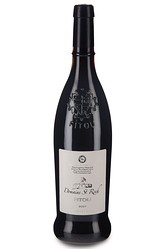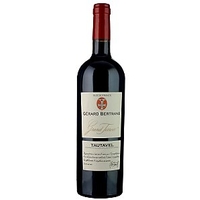(Robert Whitley’s Creators Syndicate Wine Talk column for this week.)
As a young wine enthusiast, sometime in the early 1970s, I took great pride in foraging the bargain bin to come up with superb wines that would impress my various wine mentors. In the day, the gems were likely to be relatively obscure Bordeaux, perhaps from an "off" vintage.
I can remember stocking several cases of Chateau Gloria, a cru bourgeois from Saint-Julien, because I loved the wine and the price was right, considerably less than $10 a bottle. I also bought the 1973 Chateau Mouton dirt-cheap because ’73 was considered an "off" year.
 As world demand for Bordeaux expanded, prices soared and Bordeaux ceased to be a resource for value wines. So I explored the wines of Chile, though at the time Chilean wines were more about potential greatness than quality, which was spotty.
As world demand for Bordeaux expanded, prices soared and Bordeaux ceased to be a resource for value wines. So I explored the wines of Chile, though at the time Chilean wines were more about potential greatness than quality, which was spotty.
Then came the Australian invasion, and we learned all about yummy Shiraz at startling prices due to a favorable exchange rate. Somewhere along the way, Argentina and Spain got into the game with dazzling wines that cost a pittance.
So what’s next? Where in the world will eye-popping wines be made, which would sell for a fraction of the cost of a middling Napa Valley red wine? I submit the wines of Sud de France, specifically the Languedoc and Languedoc-Roussillon, have the potential to satisfy even the most demanding palates at prices that seem to be a throwback to a more fiscally serene era.
This region is well known already for its Vin de Pays d’Oc wines, somewhat of a dubious distinction. The Vin de Pays wines of the region are mass-produced creations that don’t so much satisfy the palate as a price point. Many of the wines are produced in cooperatives that have typically stressed volume over quantity.
The existence of the Vin de Pays d’Oc wines has served to obscure the rich viticultural heritage of the south of France as well as the blossoming culture of family run estates that are now, finally, putting their historic vineyards to good use. The renaissance of the Languedoc and Languedoc-Roussillon goes back nearly two decades and is now in full swing.
Many of the finest vineyards of Grenache, Carignan, Mourvedre and Syrah are 80 years to 100 years old, with self-limiting low yields that translate to gorgeous aromas and flavors in the finished wines. The best of these are generally from AOC (Appellation d’origine controlee) villages, meaning the wines are made according to the protocols of the appellation.
 Prior to an upcoming visit to the Languedoc, I decided to taste a number of the wines from the region in advance.
Prior to an upcoming visit to the Languedoc, I decided to taste a number of the wines from the region in advance.
This week’s tasting notes are dedicated to the value gems that stood out.
One is a refreshing white, a Picpoul de Pinet, made from the Picpoul blanc grape. This is the wine most commonly served with oysters in the south of France. The other two are blends that rely heavily upon Grenache and Carignan, which are the money grapes of the western and southwestern Languedoc.
The reds of the region can often be robust, earthy and somewhat rustic, with prickly tannins that may take a few years to soften. The best, however, are nothing short of impressive, with interesting complexity, juicy red and black fruit aromas, and staying power.
I can’t predict whether or not the wines of the Languedoc and Languedoc-Roussillon will become the next big wave, but I do know the ratio of price to quality is second to none in the world today.
(Click here to read the entire column and reviews.)
8
